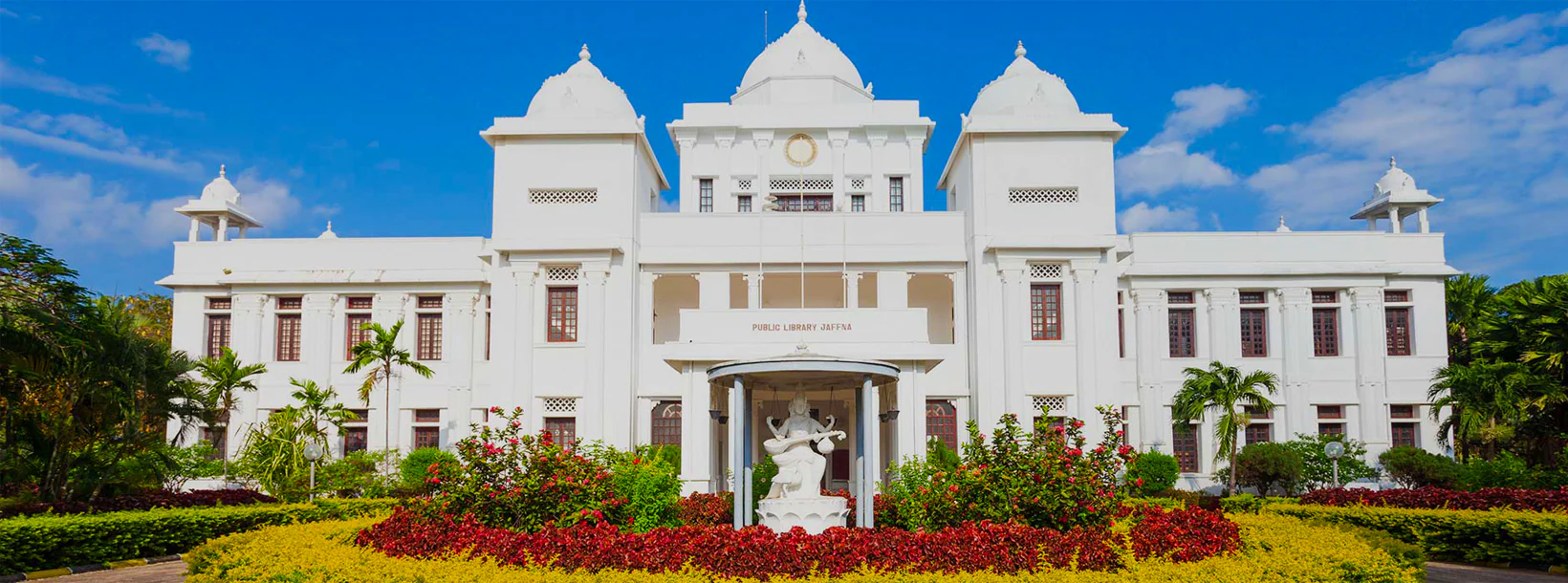
Jaffna City
Jaffna is the main city of Jaffna peninsula in the northernmost district of Sri Lanka. Comfortable intercity busses from Colombo take 10-12 hours to reach the city of Jaffna.
カンケサントゥライ
口語的に KKS として知られるカンケサントゥライは、スリランカ北部州ジャフナ地区の港湾郊外、漁業部門、およびリゾートの中心地です。かつては選挙区だったカンケサントゥライには、カンケサントゥライ ビーチ、キーリマライ ナーグレスワラム寺院 (パンチャ イシュワラム)、マヴィダプラム カンスワミ寺院があります。この港は古代から巡礼者の発着点として機能しており、スリランカのタミル人の神ムルカンにちなんで名付けられました。カンケサントゥライ郊外には多くの漁村とグラマ ニラダリ (村役人) があり、ジャフナ半島の 3 つの古代居住地域の 1 つであるバリカマムの北部にあり、半島の北海岸に位置し、ジャフナ市から 19 マイル、ジャフナ市から 135 マイルです。マナール、トリンコマリーから 255 マイル。
カンケサントゥライの寺院、ヤシの木が生い茂る砂浜の海岸沿いのビーチ、キーリマライ スプリングスで人気の観光地であるほか、郊外の天然の港、要塞、灯台などのカンケサントゥライの有名なランドマークもあります。
歴史
内戦中、カンケサントゥライ港はスリランカ海軍によって閉鎖されました。 1983年から1993年にかけて、ヴァリカマーム地域の北部は軍によって厳重警戒区域(HSZ)と宣言され、カンケサントゥライ周辺の6000エーカーの土地が没収され、補償も返還もなしに住民全員(タミル人2万5000世帯)が追放された。 。寺院はHSZ内にあり、その結果、その司祭たちは軍によって立ち退かせられた。寺院の建造物は爆撃され、最も顕著なものは 1990 年のナーグレスワラムであり、その内容は略奪されました。 2002年から2005年にかけて、米軍諜報機関と軍関係者はジャフナ空港やKKS港を含む安全保障地帯を訪問し、基地の機会を検討し視察した。内戦終結後、軍はHSZへの立ち入り制限を一部緩和し、司祭や崇拝者が寺院に戻ることを許可した。マヴィダプラム カンダスワミ寺院の高さ 108 フィートのゴープラムは再建されましたが、17 世紀に改修された構造物の多くは内戦で破壊されました。
アトラクション
ナーグレスワラム寺院
ナグレスワラム寺院は、カンケサントゥライの有名なヒンズー教寺院です。この地域で最も古い神社の 1 つであるこの神社は、シヴァ神のパンチャ イシュワラム島の最北端の神社であり、古典古代から世界中のヒンズー教徒に崇拝されています。ヒンズー教徒は、隣接する水槽であるキーリマライ泉に治療効果があると信じています。マヴィダプラム カンダスワミ寺院は港の南にあります。
キーリマライ スプリングス、カンケサントゥライ
キーリマライ温泉の淡水は地下から供給されます。 「マーシ マガム」と「アーディ アマアヴァサイ」の祭りの日。後者はタミル語の「アーディ」月 (7 月中旬から 8 月中旬) にあたり、ヒンズー教の巡礼者が町に集まり、祖先への儀式を執り行い、神聖な沐浴をします。天然温泉。これらの儀式は通常男性によって行われます。キーリマライはこの祭りで特に有名です。
カンケサントゥライ シーポート
カンケサントゥライ港はオランダ人が町に建てた小さな砦でした。砦はその後しばらくして破壊され、目に見える遺跡はありません。スリランカにある他のオランダの要塞とは異なり、この要塞には地図もほとんど残されておらず、情報もほとんどありません。
カンケサントゥライ(KKS)港でも別の緊急リハビリテーション・改善プロジェクトが計画されました。このプロジェクトでは、浚渫と残骸の除去、新しい桟橋の建設を含む、既存の防波堤、桟橋、道路の修理・リハビリが計画されています。旋回池の深さ8mまでの浚渫はすでに完了しており、荷役作業を中断することなく継続的に行うことができます。
カンケサントゥライ灯台
カンケサントゥライ灯台は 1893 年に建てられ、高さ 22 メートル (72 フィート) で、ランタンとギャラリーを備えた八角形の石積みの塔があります。スリランカ軍のバリカマム北部厳戒地帯の奥深く、海軍基地の隣にあるこの灯台は、スリランカ内戦中に大きな被害を受け、現在は稼働していない。
カンケサントゥライ ビーチ
カンケサントゥライ ビーチは、北部州のトップ 2 ビーチの 1 つとして高く評価されています。ヤシの木と冷たい水のある家族向けの砂浜。混雑が少なく自然なビーチで、港の村民の漁業、中世の建築物、灯台の景色を眺めることができます。
About Jaffna District
Jaffna is the capital city of the Northern Province, Sri Lanka. 85% of the populations of the Jaffna and Kilinochchi districts are Hindus. The Hindus follow the Saivite tradition. The remainders are largely Roman Catholics or Protestants, some of whom are descendants of colonial settlers, known as Burghers. The Tamils are divided along caste lines, with the farmer-caste Vellalar forming the majority. Sea products, red onion, and tobacco are the main products in Jaffna.
Jaffna is home to beautiful Hindu temples. An Old Dutch Fort still stands well preserved within which is an old Church. Another example of Dutch architecture is the King's House. No visit to Jaffna is complete without tasting the exquisite Jaffna mango, reputed for its sweetness. About 3 km away is the majestic Nallur Kandaswamy Temple, home to the largest religious festival in Jaffna. The Kayts Harbour is an ancient ship docking site in the Jaffna region.
About Northern Province
The Northern Province is one of the 9 provinces of Sri Lanka. The provinces have existed since the 19th century but they didn't have any legal status until 1987 when the 13th Amendment to the 1978 Constitution of Sri Lanka established provincial councils. Between 1988 and 2006 the province was temporarily merged with the Eastern Province to form the North-East Province. The capital of the province is Jaffna.
Northern Province is located in the north of Sri Lanka and is just 22 miles (35 km) from India. The province is surrounded by the Gulf of Mannar and Palk Bay to the west, Palk Strait to the north, the Bay of Bengal to the east and the Eastern, North Central and North Western provinces to the south.The province has a number of lagoons, the largest being Jaffna Lagoon, Nanthi Kadal, Chundikkulam Lagoon, Vadamarachchi Lagoon, Uppu Aru Lagoon, Kokkilai lagoon, Nai Aru Lagoon and Chalai Lagoon.Most of the islands around Sri Lanka are to be found to the west of the Northern Province. The largest islands are: Kayts, Neduntivu, Karaitivu, Pungudutivu and Mandativu.
The Northern Province's population was 1,311,776 in 2007. The majority of the populations are Sri Lankan Tamils, with a minority Sri Lankan Moor and Sinhalese population. Sri Lankan Tamil is the major language spoken in the province by the vast majority of the population. The other language spoken is Sinhala by 1 percent of the population. English is widely spoken and understood in the cities.




















